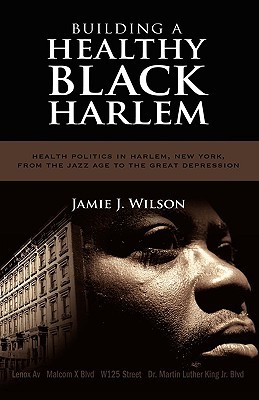
- We will send in 10–14 business days.
- Author: Jamie J Wilson
- Publisher: Cambria Press
- Year: 2009
- Pages: 222
- ISBN-10: 1604976241
- ISBN-13: 9781604976243
- Format: 14 x 21.6 x 1.6 cm, kieti viršeliai
- Language: English
- SAVE -10% with code: EXTRA
Reviews
Description
Using a sociological, historical, and psychological approach, this work offers a multidisciplinary perspective and fills the research gap about the Harlem community and urban black life during the Jazz Age and the Great Depression. This book proposes that Harlem was an intricate domain of competing ideologies, needs, and interests wherein there were many cross-cutting forms of power and exclusion. Such competition placed the community at the intersection of complicated power relations in which local, citywide and nationwide power, policies, and commitments overlapped. Changing economic circumstances that characterized the interwar period combined with the shifting municipal politics including community reliance on government support and the political strength of medical societies that left Harlem residents politically and economically circumscribed in their efforts to build and fortify institutions focused on maintaining community wellness. In this larger circumscription, citywide, statewide, and nationwide politics made health for black people a politicized affair during the early twentieth century. This work further reveals that in conjunction with the political economy of race, health was a major issue of debate that residents of Harlem could enter into despite systematic efforts by politicians and medical professionals to simultaneously limit residents' political agency and regulate health services and institutions in New York City. Such fissures and cracks within the political structure allowed for community engagement and empowerment. This study provides for a more comprehensive understanding of the connections among black morbidity, mortality, health-care delivery, and black political engagement in Harlem, New York, and aims to expand the historical understanding of race and politics, as well as the lived experiences of black people in New York City in the early twentieth century. As a scholarly work in the field of African American urban history, Building a Healthy Black Harlem is accessible to upper-division undergraduate and graduate students in courses in post-1865 United States history, African American history, and urban history. It also possesses the insight and rigor for specialists in the field of New York City history and African American urban history.
EXTRA 10 % discount with code: EXTRA
The promotion ends in 22d.17:18:18
The discount code is valid when purchasing from 10 €. Discounts do not stack.
- Author: Jamie J Wilson
- Publisher: Cambria Press
- Year: 2009
- Pages: 222
- ISBN-10: 1604976241
- ISBN-13: 9781604976243
- Format: 14 x 21.6 x 1.6 cm, kieti viršeliai
- Language: English English
Using a sociological, historical, and psychological approach, this work offers a multidisciplinary perspective and fills the research gap about the Harlem community and urban black life during the Jazz Age and the Great Depression. This book proposes that Harlem was an intricate domain of competing ideologies, needs, and interests wherein there were many cross-cutting forms of power and exclusion. Such competition placed the community at the intersection of complicated power relations in which local, citywide and nationwide power, policies, and commitments overlapped. Changing economic circumstances that characterized the interwar period combined with the shifting municipal politics including community reliance on government support and the political strength of medical societies that left Harlem residents politically and economically circumscribed in their efforts to build and fortify institutions focused on maintaining community wellness. In this larger circumscription, citywide, statewide, and nationwide politics made health for black people a politicized affair during the early twentieth century. This work further reveals that in conjunction with the political economy of race, health was a major issue of debate that residents of Harlem could enter into despite systematic efforts by politicians and medical professionals to simultaneously limit residents' political agency and regulate health services and institutions in New York City. Such fissures and cracks within the political structure allowed for community engagement and empowerment. This study provides for a more comprehensive understanding of the connections among black morbidity, mortality, health-care delivery, and black political engagement in Harlem, New York, and aims to expand the historical understanding of race and politics, as well as the lived experiences of black people in New York City in the early twentieth century. As a scholarly work in the field of African American urban history, Building a Healthy Black Harlem is accessible to upper-division undergraduate and graduate students in courses in post-1865 United States history, African American history, and urban history. It also possesses the insight and rigor for specialists in the field of New York City history and African American urban history.


Reviews